
Information on caseous lymphadenopathy, caprine arthritis encephalitis virus, Johne's disease, and mycoplasmosis in goats.

Information on caseous lymphadenopathy, caprine arthritis encephalitis virus, Johne's disease, and mycoplasmosis in goats.

Obstructive urolithiasis is a common problem encountered in small ruminant practice.

Information on fluid therapy in sheep, goats, llamas, alpacas, crias, and lambs.

Strategic deworming programs were developed for Ostertagia problems in cattle, and are of limited use with Haemonchus infestations in small ruminants.

Although sheep and goats get numerous types of parasites, Haemonchus contortus is the most important nematode and most significant parasite with respect to anthelmintic resistance, and will be the focus of this discussion.

Information on pregnancy toxemia, polioencephalomalacia, listeriosis, tetanus, scrapie, rabies, and anemia in goats.

With the constant introduction of new products on the human and veterinary market, it becomes a daunting task to keep up with veterinary pharmacology and vaccine technology.

Information on cesarean section in goats and sheep and nerve blocks, castration, and dehorning in goats.

Practitioners provide veterinary care for a growing number of meat goats in the United States - animals known to develop neurological disease.

Anaplasmosis is endemic in many parts of the country, causing significant economic losses to beef and dairy industries.

Relief of acute and chronic pain in animals is an important part of the practice of veterinary medicine. Human pain medications frequently are used in small-animal and equine practice. However, food-animal practitioners must follow the Animal Medicinal Drug Use Clarification Act (AMDUCA), which limits extra-label drug use to treatment when an animal's health is threatened, it is suffering or death might result from failure to treat.

Food-animal practitioners commonly perform local-anesthetic techniques due to the dangers associated with general anesthesia. Local anesthetic techniques usually are simple, cheap and have relatively few side effects. Unless otherwise stated, "local anesthetic agent" refers to lidocaine or carbocaine. It is preferable to clip the hair and perform a surgical prep of the site before anesthetic agents are injected, particularly those injected deep into tissues.

Disease prevention in beef herds is essential if a producer wants to be profitable. Most diseases, once we finally see them, have been smoldering in a herd for months and have been eating potential income. Avoidance is crucial because many common diseases have no treatment.

Watch out for plant toxicity during drought conditions.

Nutrition problems, and chronic parasitism should be ruled out first.

Biosecurity is no joke. Most practitioners are aware of its significance considering the media focus on bovine viral diarrhea (BVD), bovine spongiform encephalopathy and agroterrorism. Yet veterinarians who are known to make a host of producer safety recommendations often omit some security suggestions because they appear excessive.
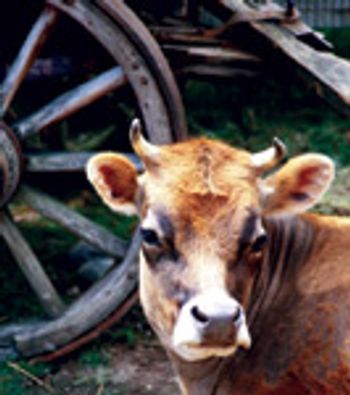
With the constant infusion of new products to the human and veterinary market, it becomes a daunting task to keep up with veterinary pharmacology and vaccine technology.
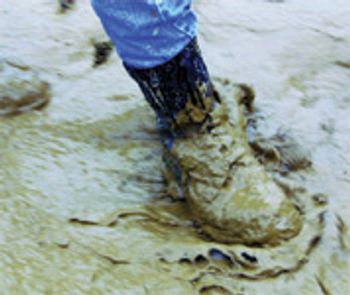
"She got into her vet truck and left without ever washing her boots!"

With the increasing numbers of meat goats in the United States, many bovine practitioners face questions about goat healthcare targeted toward internal parasite treatment and control.
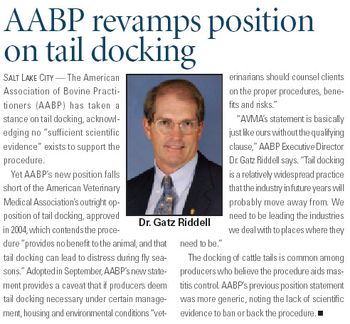
Show season kicks off in a couple months with the promise that livestock will be hauled to county and state fairs across the country. Combine inexperienced showmen with the commingling of hundreds of animals, and problems are almost destined to materialize. The following discussion highlights a variety of conditions common in livestock exhibited at shows that food animal veterinarians often are called upon to diagnose and treat.
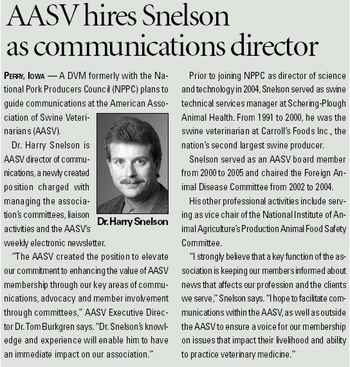
Umbilical masses in calves are a common problem presented to veterinarians. Proper management of these masses first requires a correct diagnosis. The differentials for umbilical masses include hernias and infections/abscesses. Although some hernias can spontaneously resolve, most umbilical problems require surgery.
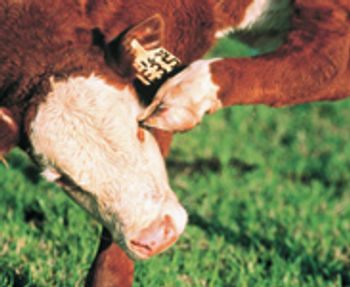
Management of beef cattle lameness can be frustrating for veterinarians and producers. But compared to our one-toed equine patients, we have two toes to work with on each foot. This presents some treatment and pain-management options not available for all species. The following article details treatment options I've become familiar with in practice.

One of the best ways to evaluate the internal structures of the foot is radiography. It's my opinion that this is one of the most under-utilized tools in bovine lameness evaluations.

The earlier "at risk" neonates are identified and treated, the better the prognosis for a healthy and productive life.

Maximizing calf survivability is crucial to economic success of beef producers. But having healthy calves starts many months before calving season. Proper herd nutrition impacts calf survivability more than any other factor. Proper environment/facilities also are important. If these two factors are under control, herd outbreaks of calf diseases will be minimized.

Published: October 1st 2008 | Updated:

Published: October 1st 2008 | Updated:

Published: October 1st 2008 | Updated:

Published: October 1st 2008 | Updated:

Published: October 1st 2008 | Updated:

Published: October 1st 2008 | Updated: